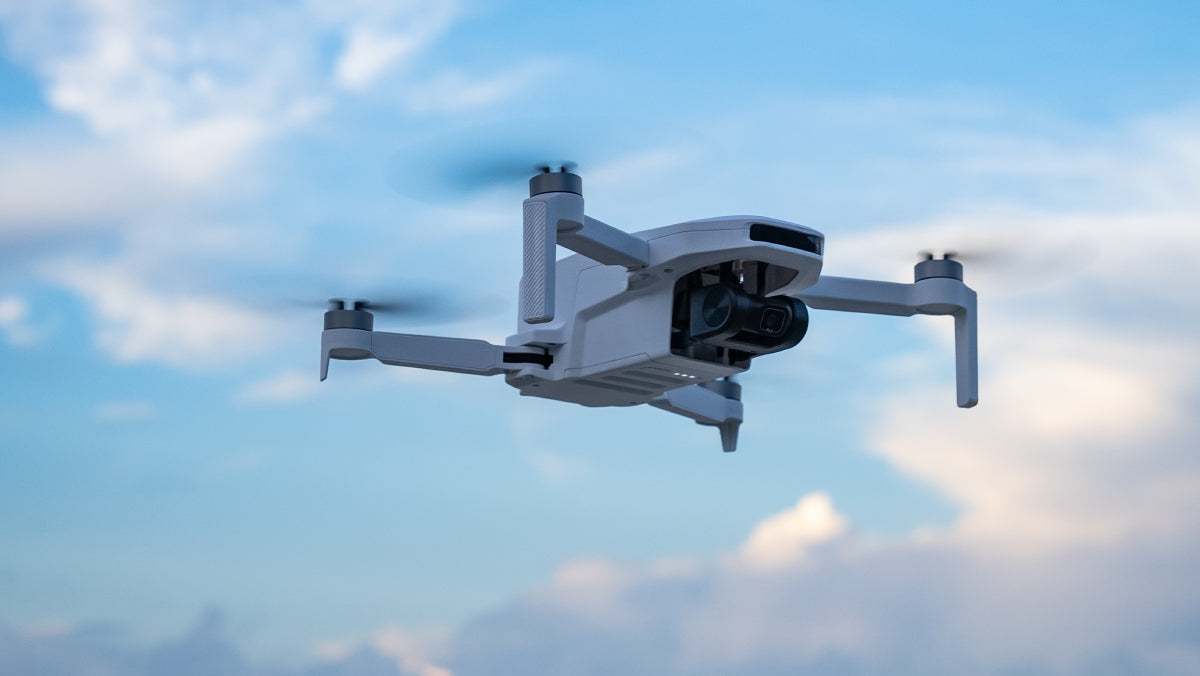Flyaways are one of the most dreaded issues for drone pilots. Losing control or contact with your drone can result in it flying out of range, potentially getting lost or damaged. Here’s how to avoid it and keep your Potensic drones safe.
What May Cause Drones to Fly Away?
Flyaways happen when a drone loses communication with the controller or can’t follow programmed commands. The common causes include:
- Loss of GPS Signal: A weak or unstable GPS connection can cause the drone to lose its positional awareness. Without a strong GPS signal, your drone may struggle to maintain its location and drift off.
- Compass Interference: Flying near metallic structures or magnetic fields can cause compass malfunctions, making the drone misinterpret its orientation.
- Low Battery: Low battery levels, especially mid-flight, may cause the drone to lose power and drift instead of responding to return commands.
- Signal Interference: Operating in areas with high levels of radio interference, such as crowded urban environments, can break the connection between your drone and the controller.
- Calibration or Software Errors: If your drone’s calibration is off or it’s running outdated firmware, it may behave unpredictably and fail to respond properly to commands.
- Misoperation: Incorrect piloting is a key cause of flyaways, especially for beginners. Common errors include improper control stick handling, which can cause sudden, unintended movements; selecting the wrong remote control mode, leading to confusing drone behavior; and mishandling smart flight modes, which may result in crashes or flyaway situations. Pilots must ensure proper understanding of the controls and flight modes to avoid these mistakes and maintain control of their drone during flight. Inexperienced pilots are especially prone to this, making it important to understand your drone’s features and settings thoroughly.
How to Prevent Flyaways
Preventing flyaways is about being prepared and aware of your surroundings. Here are essential safety tips:
- GPS Calibration: Always ensure your Potensic drone’s GPS is properly calibrated before each flight. This ensures the drone knows its home position and can return in case of signal loss.
- Update Firmware: Regularly updating your drone’s firmware helps keep its systems stable and ensures it runs on the latest software, minimizing potential issues.
- Battery Check: Before every flight, ensure both your drone and remote controller have fully charged batteries. Low battery power can cause the drone to malfunction or fail to return home.

- Check Weather Conditions: Always assess weather conditions before flying, as windy or stormy weather can pose significant hazards. Even moderate winds can affect lightweight drones, leading to control issues. For the Potensic ATOM Series drones, it’s advisable to avoid flying when wind speeds exceed level 5, as performance may be compromised under such conditions.
- Avoid Signal Interference Areas: Avoid flying near large metal structures, power lines, or other sources of signal interference, which can break the communication between your drone and its controller.
- Set Return-to-Home (RTH) Points: Potensic drones are equipped with an RTH feature, which brings the drone back to its launch point if the signal is lost. Always set your home point and familiarize yourself with how this feature works.

- Pre-Flight Drone Inspection: Before flying, conduct a thorough inspection of your drone to ensure it is in optimal condition:
- Check for physical damage to the drone body and propellers.
-
Ensure the propellers are securely attached and undamaged.
-
Confirm that the camera and gimbal are functioning properly.
-
Inspect battery connections and ensure the battery is seated correctly.
-
Test the remote control and ensure it’s connected to the drone.

Keep Your Drone in Sight
In addition to the tips above, always fly within your visual line of sight (VLOS) to maintain better control and awareness of your drone’s position. Staying within VLOS allows you to manually intervene if necessary, particularly if the live video feed is interrupted. This practice not only enhances your control but also ensures the safety of your drone and those around you.

Pilot Training and Practice
Finally, good piloting skills can help prevent accidents. For beginners, it’s best to practice in open areas with no obstacles. As you gain confidence, you’ll be able to handle more complex environments with ease.
Flyaways can be a frustrating experience, but they’re avoidable. By following these steps and regularly maintaining your Potensic drone, you can ensure safer flights and enjoy worry-free aerial adventures.

